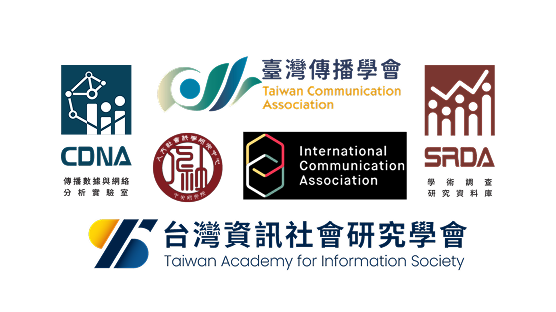Taiwan Communication Survey (TCS) tracks and analyzes changes in communication behaviors in Taiwan, collecting comprehensive data on communication communities. Through diverse research methods, it outlines the rapidly evolving digital generation, providing scholars with a thorough understanding of the current state of communication in Taiwan and opportunities for theoretical development. It is gradually becoming a complete and comprehensive long-term database.
Insight into Media Landscape
Established in 2012, the Taiwan Communication Survey Database is one of the most representative databases for communication issues in Taiwan. It centers around face-to-face surveys conducted with the general public across the island, incorporating various research methods. This allows for an in-depth description of media usage patterns among Taiwanese audiences. Over the past 12 years, 11 surveys have been completed, accumulating rich survey data.
The survey topics cover media literacy, internet usage, political communication, and more. It tracks long-term changes in the usage of both traditional and emerging media among the Taiwanese population, exploring the impact of emerging media on interpersonal interactions, its effect on life expansion, its role in entertainment and psychological health regulation, as well as the relationship between media, political communication, and civic communication. It also examines the role of media in risk and disaster communication, addressing key communication issues of contemporary relevance.
Data Open
Phase Three, Year Two (2023): Communication and Interpersonal Relationships - Social Interaction and Self-Presentation: Digital Footprint Survey
Participants in this study were required to meet the following criteria: possession of a Google account, daily leisure-time internet usage of at least one hour, daily use of Facebook, and age 18 or older.
Data collection took place from November 1, 2023, to January 31, 2024. The process involved multiple components, including regular news consumption, completion of surveys, and the provision of digital trace data. These data included browsing history from the Google Chrome browser, viewing, search, and subscription records on YouTube, as well as browsing, subscription, reactions, and comments on Facebook.
Survey Data
Our Features
Since its establishment in 2012, the Taiwan Communication Survey Database has conducted annual large-scale face-to-face surveys to systematically document the evolving media use behaviors of Taiwanese audiences. With a consistent set of core questions addressing interpersonal communication and media use behaviors—encompassing traditional media (e.g., newspapers, magazines, radio, television, internet use) and emerging digital platforms (e.g., Facebook, IG, YouTube)—the database provides a comprehensive record of media consumption trends spanning over a decade. This longitudinal data not only supports theoretical innovation and time-series analyses but also provides a robust empirical foundation for the academic community and serves as a critical reference for media policy and governance in Taiwan.

With the rapid advancement of digital technologies, communication media have profoundly reshaped how people access information, engage in social interactions, and spend their leisure time. Through longitudinal surveys, the Taiwan Communication Survey Database examines the benefits of emerging media in areas such as information acquisition, relationship building, and civic participation. On the other hand, it also investigates the potential negative consequences of excessive media use—particularly among adolescents—including internet addiction, academic distraction, anxiety, and reduced self-esteem. By systematically comparing media usage patterns and outcomes across age groups, the database provides critical insights into both the positive and negative effects of media use, offering valuable implications for education, mental health, and communication policy.

Similar media behaviors may reflect diverse psychological motivations: one user may go online for information, another to voice opinions, and yet another to strengthen social ties. The Taiwan Communication Survey Database goes beyond documenting behavior to explore the underlying motivations and emotional responses associated with media use. For example, adolescents’ reliance on short-form video content may reflect needs for stress relief, identity formation, or coping with anxiety. The database also examines how media engagement intersects with self-worth and the quality of parent–child relationships, providing critical insights for both academic research and practical interventions aimed at understanding how media shapes psychological well-being in everyday life.

How We Conduct Surveys

To provide an accurate and comprehensive understanding of media usage behaviors across diverse audiences, our data collection cover multiple age segments. Specifically, we include face-to-face interviews of the general public (adults aged 18 and over), while also focusing on youth aged 9–17 through a parent–child dyad designs, enabling an in-depth examination of how emerging media influence family dynamics. For adults aged 55 and above, we examine the relationship between media use and aging coping. Additionally, we explore how digital media are seamlessly integrated into the daily lives of netizens. Utilizing experience sampling methods, we capture real-time media behaviors of young adults, offering insights into their digital engagement patterns. This generationally diverse approach provides a nuanced and comprehensive portrait of media engagement across the lifespan.

To capture the multifaceted nature of media use, the project integrates diverse methods, including face-to-face interviews, online surveys, digital trace data, and experience sampling. These approaches span from representative sampling to real-time, in-situ data collection, with each method tailored to specific research goals. This systematic, longitudinal, and multi-method design not only enriches theoretical development but also offers robust empirical foundations for evidence-based policy making.

Media use is inherently fluid, context-dependent, and often difficult to recall or accurately capture through a single method and at any one point in time. To address this complexity, the project employs a multi-temporal research design—spanning real-time assessment via Experience Sampling Method, annual cross-sectional surveys, and long-term panel tracking. This integrative approach not only captures the immediate, moment-to-moment dynamics of media engagement but also reveals longitudinal patterns, offering a more nuanced and comprehensive understanding of how media behaviors evolve over time.

Research Resources
Research resources in the field of communication span a wide range of categories, including academic journals, various social survey databases, and organizations related to media and communication. The Taiwan Communication Survey Database connects key institutions and resources both domestically and internationally, while also curating essential media websites. It supports scholars in conducting theoretical research and helps industry professionals stay on top of media trends, fostering the exchange between academia and practice and advancing the depth and application of communication research.
Read More

